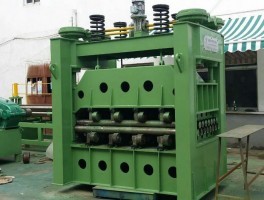With the development of equipment, more and more companies are using Kaiping machines, which have high quality. Everyone must follow the correct methods to ensure the effective operation of the equipment in order to achieve good usage results. So in this issue, let's take a look at how to reduce the wear rate of the Kaiping machine.

1. Wear and tear are inevitable when using a flatbed machine. As long as the wear rate can be controlled within the allowable range during use, that is, the wear amount does not exceed the allowable value within the predetermined life cycle, it can be considered as normal wear. Run in reduces equipment wear peaks, increases actual contact area, and lowers wear rates.
2. The sleeve roller chain of the Kaiping machine consists of an outer chain plate, an inner chain plate, a pin shaft, and a drum. The inner chain plate is fastened to the sleeve, the outer chain plate, and the pin shaft through matching. There is a gap fit between the sleeve and the pin shaft, which can rotate relatively freely to adapt to the bending and stretching of the chain when entering and exiting the sprocket. As the wear of the chain mainly occurs between the pin shaft and the sleeve, there should be a small gap between the inner and outer chain plates to allow the lubricating sleeve to pass through.
3. The distance between the centerlines of two adjacent pin shafts of a Kaiping machine is called pitch. The pitch of the chain is an important parameter, and its size directly reflects the load-bearing capacity and size of the chain. If the load is large, double row or multi row chains with small spacing can be used to reduce the size. But the more rows there are, the greater the unevenness of each row's load-bearing capacity, so it generally does not exceed 3 or 4 rows.
The above are methods to reduce the wear rate of the Kaiping machine. You can refer to the above content during use. If you have any further questions, please feel free to call us and we will recommend suitable repair methods based on your actual requirements.

 Language
▼
Language
▼

